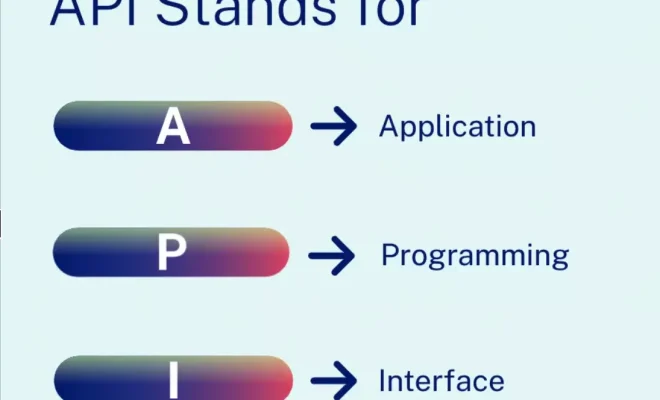What Is an API and What Does the Acronym Mean?

In today’s digital world, technology has enabled us to communicate with other systems or applications seamlessly. One crucial aspect of this communication is the Application Programming Interface (API). An API can have significant implications to businesses, developers, and consumers alike, making it essential to understand what it is and what the acronym means.
API stands for Application Programming Interface, which is a set of protocols, routines, and tools used to build software and applications by providing access to data or services from a particular source. Essentially, APIs enable different software systems to interact and communicate with each other, regardless of their different programming languages, programming architectures or platforms.
An API is a software intermediary that serves as a connector between various software applications. If you want to book a ride, for example, Uber’s API or Lyft’s API is what will connect different software applications like payment, location, ride request, and driver availability. Similarly, if you want to log in to certain applications using your social media login, say Facebook or Google, then it’s those companies’ APIs that are letting the secondary application access your authentication details.
APIs usually operate on a request-response model. This means that when one application requests data, an API will then process the request and provide specific instructions on how to access the requested data or service. Once the primary system receives the requested data, it can then transform it and use it to its advantage.
APIs play a vital role in modern technology since they offer several advantages to businesses, application developers, and consumers. For instance, APIs enable developers to build innovative applications by making it easier to integrate third-party features and services from other vendors. This saves time, minimizes risk of errors, improves the performance of the final product, and increases the likelihood of a successful deployment.
APIs also allow businesses to innovate faster and reduce their development costs, minimizing redundancy and promoting efficiency since they can focus on creating a piece of functionality that can be reused by their existing applications, without the need to start from scratch every time. This translates to significant cost savings and better customer outcomes.
In conclusion, if you’re a business, a developer or a consumer, it’s essential to have an understanding of what APIs are and what they can do. Whether you’re building a custom application, integrating different services or interacting with different software systems, APIs are the key that makes it all possible. So next time you hear the term API, remember that it’s not just another digital buzzword, but a vital component in the world of technology that’s making our lives easier and creating endless possibilities.





